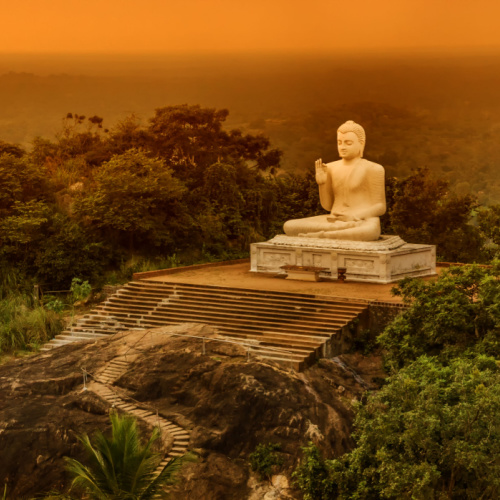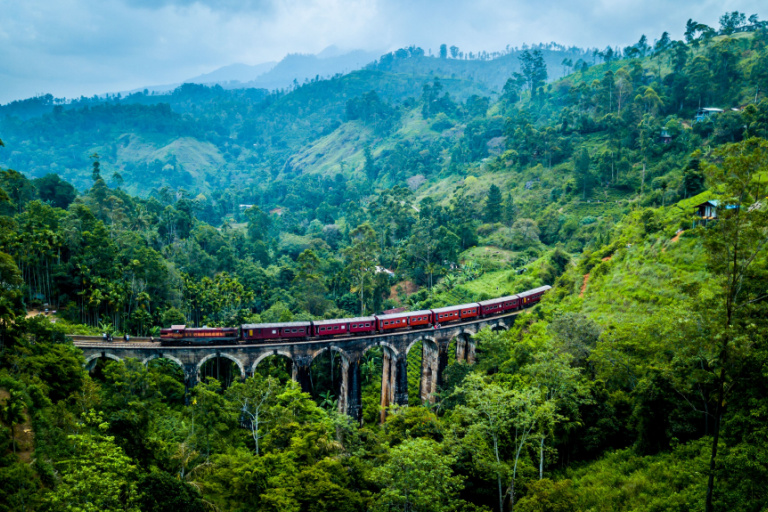
dodes11/Shutterstock
When Is the Best Time to Visit Sri Lanka?
The best time to visit Sri Lanka is during the shoulder seasons of April to May and September to October. During these months, the weather is generally mild and sunny across most of the country, with fewer crowds and lower prices than during the peak dry season of December to March.
Here are some of the benefits of visiting Sri Lanka during the shoulder seasons:
- Mild weather: Sri Lanka has a tropical climate, but the shoulder seasons offer mild and pleasant temperatures across most of the country. This makes it ideal for sightseeing, exploring, and enjoying the outdoors.
- Smaller crowds: The shoulder seasons are less crowded than the peak dry season, so you’ll be able to enjoy Sri Lanka’s popular tourist attractions without having to deal with large crowds. This is especially important if you’re visiting popular destinations like Sigiriya, Anuradhapura, and Galle Fort.
- Lower prices: Prices for flights, accommodation, and activities are generally lower during the shoulder seasons than during the peak dry season. This means you can save money on your trip without having to sacrifice quality.
Here are some specific examples of how you can enjoy the most of Sri Lanka during the shoulder seasons:
- April to May: The weather in April and May is typically sunny and warm, with occasional showers. This is a great time to visit for sightseeing in the Cultural Triangle, hiking in the Knuckles Mountains, and attending the Sinhala and Tamil New Year celebrations.
- September to October: The weather in September and October is also typically sunny and warm, with occasional showers. This is a great time to visit for surfing on the east coast beaches, hiking in Horton Plains National Park, and attending the Kandy Esala Perahera festival.
While there are many great times to visit Sri Lanka, if you’re looking for the best weather, fewer crowds, and lower prices, then we recommend visiting during the shoulder seasons of April to May and September to October.
Please note: Sri Lanka is a Buddhist country, so it’s important to be respectful of the local customs and traditions. This includes dressing modestly, avoiding public displays of affection, and being mindful of your behavior in temples and other religious sites.
 Average Temperatures by Month
Average Temperatures by Month
|
Jan |
Feb |
Mar |
Apr |
May |
Jun |
Jul |
Aug |
Sep |
Oct |
Nov |
Dec |
| Fahrenheit |
82°
|
83°
|
86°
|
88°
|
87°
|
86°
|
85°
|
85°
|
85°
|
85°
|
84°
|
82°
|
| Celsius |
28°
|
28°
|
30°
|
31°
|
30°
|
30°
|
29°
|
29°
|
29°
|
29°
|
29°
|
28°
|
Climate in Sri Lanka
Summer Season in Sri Lanka
Often considered as 'summer' in Sri Lanka, the Yala season brings drier weather, particularly to the country's western and southern coasts. This period is characterized by warm temperatures and less rainfall, making it a popular time for beach holidays and wildlife safaris, especially in the national parks located in these regions.
Rainy Season in Sri Lanka
Sri Lanka experiences two monsoon seasons. The Southwest Monsoon (Yala) affects the southwest part of the country from May to August, bringing wet conditions, while the Northeast Monsoon (Maha) impacts the northeast from October to January, with significant rainfall. These monsoons are vital for agriculture and can affect travel plans, particularly in the monsoon-affected regions.
Winter Season in Sri Lanka
The Maha season, often equated to 'winter' in Sri Lanka, is generally drier and cooler, especially in the northern and eastern parts of the country. This season is ideal for visiting the cultural triangle, eastern beaches, and engaging in outdoor activities due to the pleasant weather conditions. While it is the dry season for the northeast, the southwest may experience occasional rain.
Our Recommendations
| Destination |
Jan |
Feb |
Mar |
Apr |
May |
Jun |
Jul |
Aug |
Sep |
Oct |
Nov |
Dec |
| Sri Lanka |
 |
 |
 |
 |
 |
 |
 |
 |
 |
 |
 |
 |






